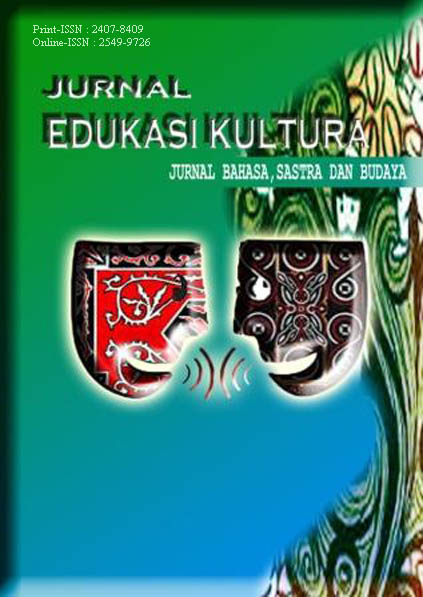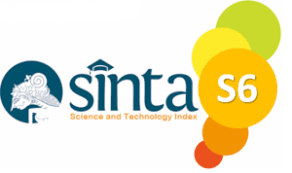Desain Model Dan Instrumen Evaluasi Holistik Dalam Mata Pelajaran Matematika Kelas 4 Jenis-Jenis Segitiga
Keywords:
Evaluasi holistik, Matematika, segitiga, pembelajaran aktif, penilaian autentikAbstract
Comprehensive learning assessment is a crucial concern in education, particularly at the elementary level. This study aims to design and test a holistic evaluation model and instrument for Grade 4 Mathematics focused on the topic of triangle types. This topic was chosen due to the urgent need to improve assessment systems that still predominantly measure cognitive aspects without considering affective and psychomotor domains. This research used a qualitative descriptive method with a developmental approach. Data were collected through observation, documentation, and trial implementation of the instrument involving 20 fourth-grade students. The evaluation encompassed three domains: cognitive (written test), affective (attitude observation during group work), and psychomotor (triangle drawing and presentation task). The results indicate that the holistic evaluation model provides a more complete and in-depth picture of students’ learning achievements. The average student scores were high across all domains, with the psychomotor domain scoring the highest. These findings highlight the significance of holistic assessment in developing students’ full potential. Holistic evaluation fosters active student engagement, provides meaningful feedback for teachers, and continuously improves learning quality.References
Achmad, Bagas Aditya, and Nila Hani Awalia. ANALISIS PRINSIP DAN INSTRUMEN DALAM EVALUASI PEMBELAJARAN MATEMATIKA DI SEKOLAH DASAR. Jurnal Ilmiah Multidisiplin Ilmu 1.5 (2024): 43-47.
Black, P., & Wiliam, D. (1998). Penilaian dan Pembelajaran di Kelas. Penilaian dalam Pendidikan: Prinsip, Kebijakan, dan Praktik , 5(1), 7-74.
Diva Nurjannah Batubara, L. P. (2024). Analisis Kesulitan Belajar Matematika Pada Siswa SD. Journal Of Science Research, 17129-17135.
Hayati, Rahmatul, et al. Perancangan model Holistic Mathematics Education (HME) berbasis pendekatan Realistic Mathematics Education (RME) pada siswa sekolah dasar (SD) kelas tinggi. Borobudur Educational Review 5.1 (2025): 85-93.
Rahayu Sesanti, N., & Ferdiani, RD (2017). Penilaian Pembelajaran Matematika . Yayasan Edelweis. ISBN: 978-602-14916-4-5
Rulyansah, Afib, et al. Pemberdayaan Guru Sekolah Dasar dalam Menerapkan Authentic Assesment. Indonesia Berdaya 3.4 (2022): 779-786.
Miles, M. B., & Huberman, A. M. (2019). Qualitative Data Analysis: An Expanded Sourcebook. Jakarta: UI Press.
Permendikbud RI No. 66 Tahun 2013. Standar Penilaian Pendidikan.
Sugiyono. (2018). Metode Penelitian Pendidikan: Pendekatan Kuantitatif, Kualitatif, dan R&D. Bandung: Alfabeta.
Published
How to Cite
Issue
Section
License
Copyright (c) 2025 Anggun Swi Purba, Citrawati P. Ambarita, Mia Ningsih, Rasta Yuli Kristiani Br Tarigan, Widya Afriliani Damanik, Nurhudayah Manjani

This work is licensed under a Creative Commons Attribution 4.0 International License.

This work is licensed under a Creative Commons Attribution 4.0 International License
Authors who publish with this journal agree to the following terms:
- Authors retain copyright and grant the journal right of first publication with the work simultaneously licensed under Creative Commons Attribution 4.0 International License that allows others to share the work with an acknowledgement of the work's authorship and initial publication in this journal.
- Authors are able to enter into separate, additional contractual arrangements for the non-exclusive distribution of the journal's published version of the work (e.g., post it to an institutional repository or publish it in a book), with an acknowledgement of its initial publication in this journal.Penulis.
- Authors are permitted and encouraged to post their work online (e.g., in institutional repositories or on their website) prior to and during the submission process, as it can lead to productive exchanges, as well as earlier and greater citation of published work (Refer to The Effect of Open Access).














